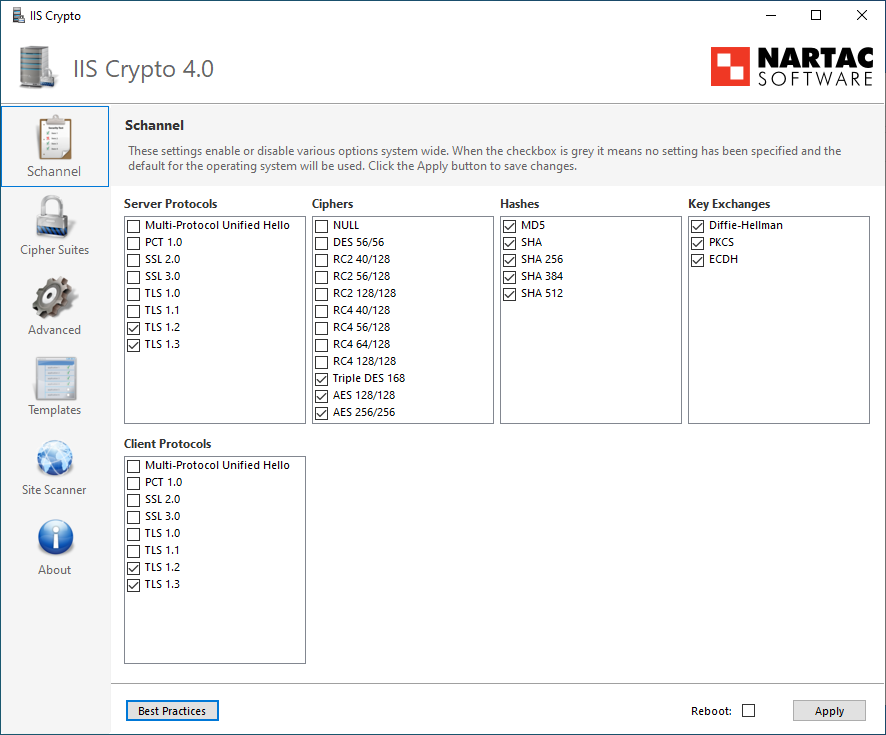SSL RC4 Cipher
Suites Supported
SSL Version 2 and
3 Protocol Detection
after ask around then found out need to change the server registry key to disable some other the RC4 , SSL V2 and V3 setting.
To make the task simple we have some simple tools for it :
first we need the scan tools , which is Nmap tools, you can download from internet.
after install and run following script :
nmap --script ssl-enum-ciphers 172.xx..yy.zz -p 443
you will get the results look as following , as you see the SSlv3 is enable.
Dowload NARTAC Software here : https://www.nartac.com/Products/IISCrypto/Download
After install then you can choice the setting you want , click Apply then Restart . Done.

